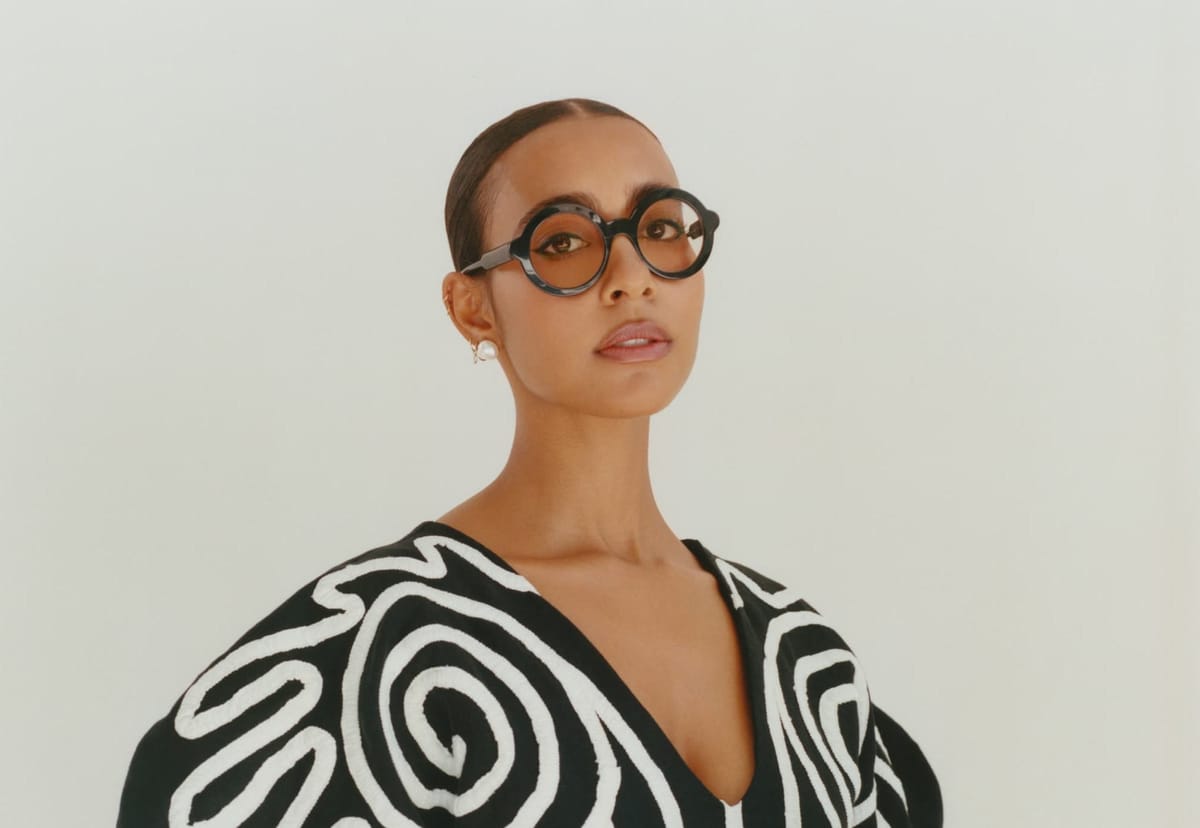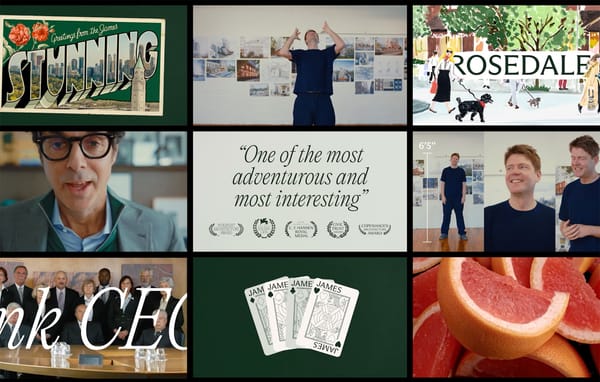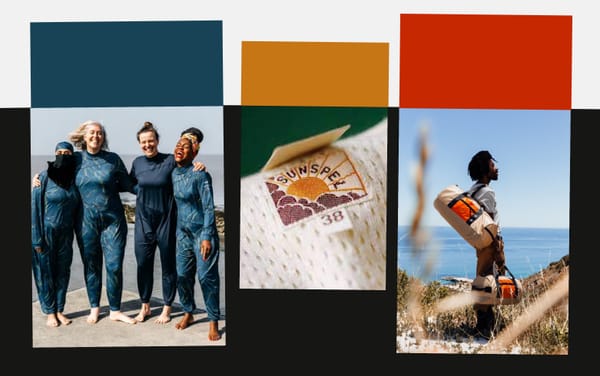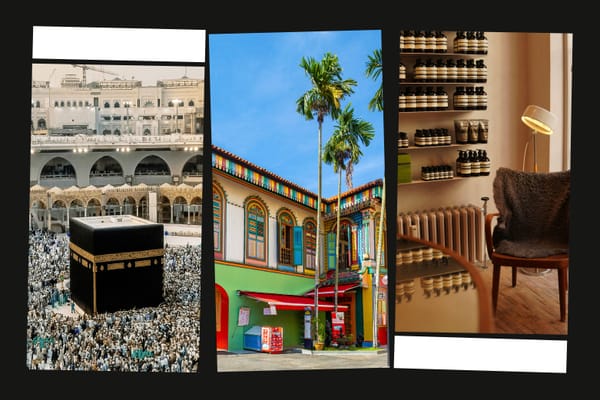Expanded Field
Hannah Traore on opening a gallery in New York and on artists’ varied relationships to color

Hannah Traore worked at the Museum of Modern Art and Fotografiska in New York before the pandemic offered her an opportunity to try something new. This week, her eponymous gallery, for which Frontier collaborated on purpose design, the visual identity, the website design, and more, opens to the public. We spoke with Traore about why it’s a good time to open a gallery, how broadly she defines art, and artists’ varied relationships to color.
Frontier: With the gallery system in flux and a pandemic showing no signs of letting up, some would say this is a difficult moment to open a gallery. What excites you about doing so now?
HT: The pandemic helped in one way: I signed my ten-year lease at a moment when commercial real estate was really cheap. It’s a shame that so many small businesses closed—not only galleries, but mom-and-pop stores, restaurants, you name it. But it did open up this opportunity for me and others to get a foothold in the Lower East Side.
More generally, people in New York are, like always, craving excitement, craving culture, craving the new. The pandemic has made that difficult. So it will help me, I think, to be offering something new at a moment when people are seeking that out even more than normal.
Frontier: One of the core values you discuss is having an expansive definition of art. Can you elaborate on that?
HT: In life, art is in conversation with everything. We see art in conversation with education, media, fashion—everything. But that doesn’t always translate into gallery spaces. The traditional gallery model is to work with artists, sell their work, help them further their careers. That’s imperative, but it doesn’t have to be everything. I want to expand upon that. I want to work with artists who wouldn’t typically find support within the gallery system. In fact, one of my first shows is with an artist who straddles the fashion and art worlds but who is taken much more seriously in the former. But I also want to encourage my artists to think bigger. And I want to offer art-history classes, or run classes for kids on the weekends. It’s all about expanding the conversations around art. And having this as a value keeps me open to other ideas, other options. I don’t want to feel constrained or limited in what I can do in this space.
Frontier: How does that relate to your focus on presenting underrepresented artists and communities? Is a disproportionate number of those artists excluded from the current system’s narrow thinking?
HT: As I mentioned, so many artists straddle multiple worlds and are looked down upon for it. The artists and their artwork are always more important than any definition or box we might put them in. I know that working with artists in underrepresented groups is currently trendy. But I’ve wanted to do this for years, not least because of my own identity: Jewish, Muslim, half Black, a woman, an immigrant, the daughter of an immigrant. I want people like me to be able to see themselves in the art in galleries. I’m also just personally interested in these artists. It’s second nature to me.
I want to return to the idea of trendiness. I dislike how Black people, artists of color, or queer artists are “trending.” White artists have never trended; they’re a constant. The same should be true of artists from other groups, other communities.
Frontier: Who has inspired you to make the leap from your work in nonprofit institutions to opening your own business?
People like Nicola Vassell, who I have gotten to know a bit, are important. And I’m glad to be joining other Black women, like Ebony Hayes, leading galleries in New York. But I have to say that Linda Goode Bryant’s Just Above Midtown gallery was my primary inspiration.
When I first decided to open a gallery, I didn’t really know where to start. So I began researching, and a lot of that research focused on Brant’s work. Her eye was amazing, what she did was amazing.
Why a gallery? I have a vision, and I don’t want to give that vision away to someone I’m working for. Though even if I wanted to, I couldn’t; it’s not like institutional leaders listen intently to people working at my level. If I wanted to do my own thing, to work directly with artists, I felt I had to have a gallery.
Initially I had zero interest in the business side of it, beyond keeping the doors open and supporting my artists. Now that I’ve made so much progress, and have worked with business consultants, wrote up a business plan, I’m realizing how much I enjoy this side of the work. It will never be the main goal, but I appreciate more readily how galleries work as businesses.
Frontier: One of your inaugural exhibitions is about the poetics of color. Can you talk about the emphasis, in using the term color, on hue and vibrancy more than on identity?
HT: I’ll say first that identity is important to the show. It’s an exhibition about artists of color who play with color in very fun ways. Color has many meanings. I’m interested in those meanings and thought it would be a nice way to introduce the gallery, and me, to the world.
Second, a lot of people think “artists of color” means Black people. But it’s an expansive term. This exhibition includes an Indigenous artist, a Colombian-Mexican-Spanish artist, Asian artists of different cultural heritages. Their works are all quite different, but color is the throughline, and for that reason the show hangs together beautifully.
Many of these artists of color are usually expected to talk about their race in and through their work. I love work about identity, but I also love work that has nothing to do with identity. Again, such expectations are not placed upon white artists. By focusing on the works’ use of color, each work can exist on its own, can breathe, can enter into conversation with the other works in the show. Wendy Red Star, an Indigenous artist, said that she was excited to be in an exhibition that wasn’t just about Indigenous artists and the stories their art can tell. That was really gratifying to hear.





